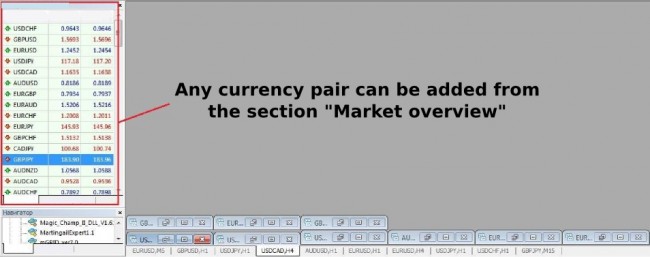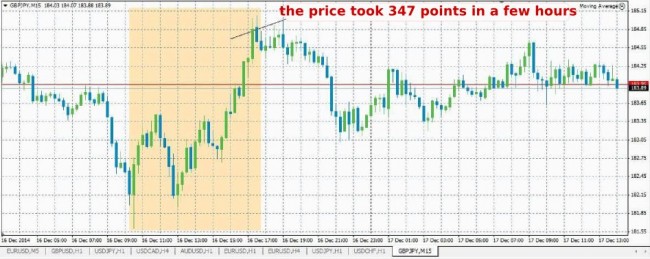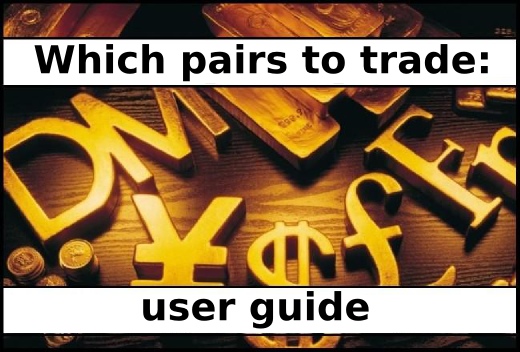
Any trader can use dozens of currency pairs in trading, along with metals, oil, grain and other tools. But not all the pairs can be recommended to use in trading. Beginners should approach the issue of which pairs to trade with particular care.
All currency pairs can be divided into 3 categories:
- major (with the dollar), which are preferred by most traders. Beginners in the field of currency speculation are recommended not to go beyond this group at first;
- crosses (pairs without the dollar), for example, AUD/NZD, AUD/CAD, etc. There are also popular pairs among them (EUR/JPY, GBP/JPY, AUD/JPY, NZD/JPY);
- exotic pairs, for example, with the South African rand and the Indian rupee.
As for the choice of a particular pair, you need to consider a number of criteria:
- a pair must be analyzed well; the risk of force majeure, such as the risk of intervention by the Central Bank, should be minimal;
- it is undesirable to use pairs with low volatility in intraday trading;
- you need to take the time of trading into account, for example, the bulk of the action for EUR/USD pair falls for the European and American trading sessions, USD/JPY may surprise you at night, during the Asian session;
- it is not recommended to use pairs with a big spread. For example, the spread for EUR/CAD cross is 16 points, this pair cannot be recommended for trading.
Which pairs from the major group to trade
EUR/USD can be called one of the most popular currency pairs, and GBP/USD is just slightly behind it. Both the pound and the euro work out basic levels well and have sufficient volatility for intraday trading. Daily range within 70-150 points can be considered the norm.
Even if you do use USD/JPY at the initial stage of trading, it is best to trade on timeframes not below h4. You have to be prepared for surprises from the Japanese central bank, as foreign exchange intervention is not such a rarity here. Strong movements can also occur during the Asian session.
It is better not to use USD/CHF in trading – signals appear relatively rarely, and it is more difficult to achieve stability on this pair. Franc often "falls asleep" and then the flat may end up with an unexpected shot knocking the stops.
AUD/USD, NZD/USD and USD/CAD can be considered typical commodity currencies. Thus, the loonie (Canadian dollar) with almost 100% accuracy copies the behavior of the oil price chart. Accordingly, if the black gold depreciates, the USD/CAD rises (the Canadian depreciates).
The Australian dollar is highly dependent on the Chinese economy, so any decline in production in China turns into a drop in AUD/USD. The situation with a New Zealander is similar, the economies of New Zealand and Australia are closely related in general.
Popular crosses
Besides the major currency pairs, any broker gives you access to the crosses. Wondering which pairs to trade, many beginners make random choices and reduce the chances of success at an early stage. Among the popular crosses, we can single out the pairs with yen: AUD/JPY, NZD/JPY, GBP/JPY and EUR/JPY.
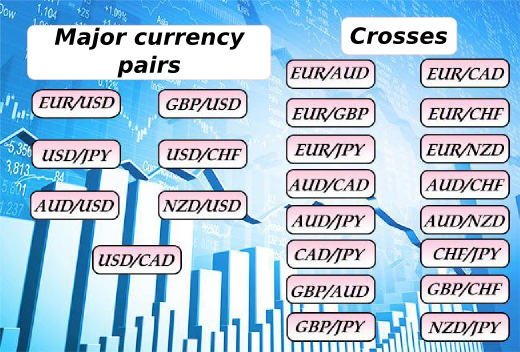
These crosses are highly volatile; they can easily take 200-300 points per day. Trading on small timeframes is more difficult; candles with a large tail often appear on the chart, which gather a rich harvest of stops.
To fight it, you can increase the working timeframe, SL sizes will increase respectively, and therefore, the load on the deposit would also be higher than in trading, say, with EUR/USD. In addition, inclusion of the yen suggests that the strong movement can occur during the Asian session.
But the CAD/JPY and CHF/JPY are better to be excluded from the list of traded pairs at all, as they are difficult to predict compared to the rest. For the remaining 10 cross-rates, they are rarely used in trading, due to low volatility and complexity in the analysis. However, expert advisors are sometimes specifically created for quiet crosses, for example, AUD/NZD. But the newcomer is better to avoid them.
Exotic and precious metals
Theoretically, you can trade pairs with the Indian rupee (USD/INR), South African rand (USD/ZAR) and other exotic currencies, but there is no sense in it. It is quite difficult to predict the price movement; the volatility is low, and even the technical analysis works not always.
The situation is different with precious metals. Gold and silver are most often selected for trading (although, if desired, you can speculate on the price of copper, aluminum, palladium, etc.). The trading terminal displays gold and silver as XAU/USD and XAG/USD, respectively, although it may simply indicate Gold or Silver instead, depending on the DC.
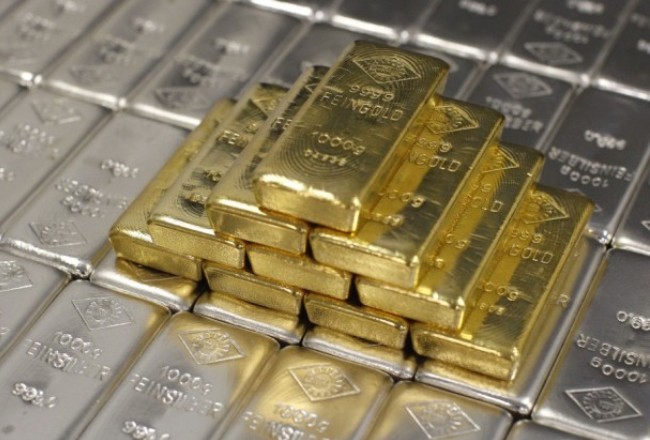
Options with the intersections with the euro are also available – XAU/EUR and XAG/EUR. But in this case the volatility is somewhat reduced, and hence the opportunity for earnings. Silver is not as popular as gold, including due to the high price of 1 point.
If one is just beginning the path of the trader, then it is better to postpone precious metals for the future when deciding on which pairs to trade. Standard methods of analysis (technical or wave) are applied to these instruments, but you have to take the increased sensitivity to the foundation into account. Gold, for example, was considered a risk-free asset at all times, so if the situation in the world is unstable, the growth of the yellow metal is guaranteed.
Summing up: what to choose
Depending on the "experience" in the foreign exchange market, the answer to the question of which pairs to trade is different. For example, a novice may be advised to hone their skills on EUR/USD, GBP/USD, if you wish, you can experiment with the commodity currencies AUD/USD, USD/CAD and NZD/USD.
A professional in the field of speculation has most likely already decided on the main working tools. The listed "set of newcomer" is added with USD/CHF and USD/JPY, as well as the JPY crosses AUD/JPY, NZD/JPY, GBP/JPY, EUR/JPY, and perhaps precious metals.
The number of the used currency pairs is not an indicator of success. Many pros thrive by trading 1 or 2 pairs (EUR/USD or GBP/USD). Trading 5-10 pairs at the same time, the trader simply sprays attention and damages the final result. So it is better to focus on 1-3 tools and quietly build up a deposit.
Social button for Joomla



